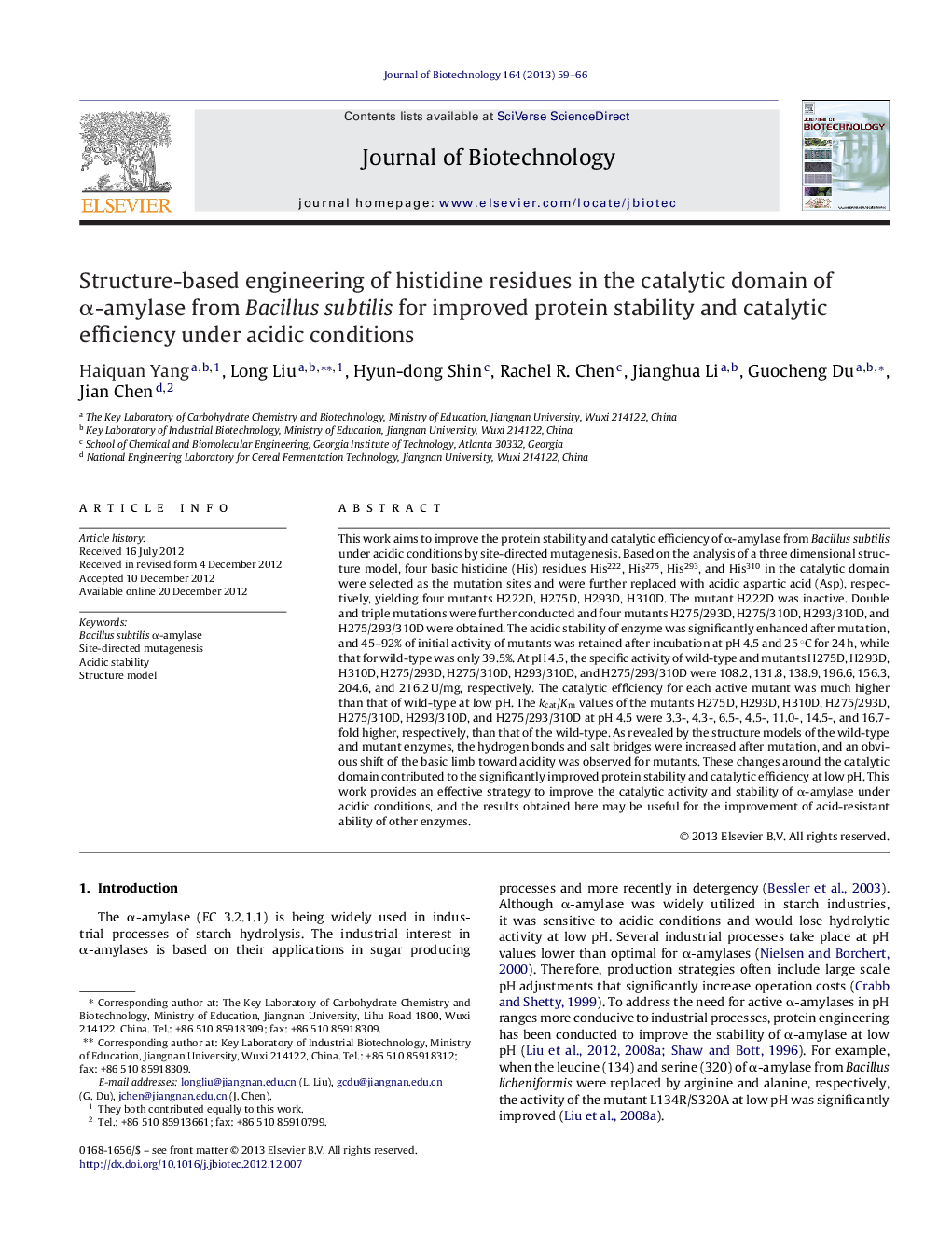| کد مقاله | کد نشریه | سال انتشار | مقاله انگلیسی | نسخه تمام متن |
|---|---|---|---|---|
| 23561 | 43452 | 2013 | 8 صفحه PDF | دانلود رایگان |

This work aims to improve the protein stability and catalytic efficiency of α-amylase from Bacillus subtilis under acidic conditions by site-directed mutagenesis. Based on the analysis of a three dimensional structure model, four basic histidine (His) residues His222, His275, His293, and His310 in the catalytic domain were selected as the mutation sites and were further replaced with acidic aspartic acid (Asp), respectively, yielding four mutants H222D, H275D, H293D, H310D. The mutant H222D was inactive. Double and triple mutations were further conducted and four mutants H275/293D, H275/310D, H293/310D, and H275/293/310D were obtained. The acidic stability of enzyme was significantly enhanced after mutation, and 45–92% of initial activity of mutants was retained after incubation at pH 4.5 and 25 °C for 24 h, while that for wild-type was only 39.5%. At pH 4.5, the specific activity of wild-type and mutants H275D, H293D, H310D, H275/293D, H275/310D, H293/310D, and H275/293/310D were 108.2, 131.8, 138.9, 196.6, 156.3, 204.6, and 216.2 U/mg, respectively. The catalytic efficiency for each active mutant was much higher than that of wild-type at low pH. The kcat/Km values of the mutants H275D, H293D, H310D, H275/293D, H275/310D, H293/310D, and H275/293/310D at pH 4.5 were 3.3-, 4.3-, 6.5-, 4.5-, 11.0-, 14.5-, and 16.7-fold higher, respectively, than that of the wild-type. As revealed by the structure models of the wild-type and mutant enzymes, the hydrogen bonds and salt bridges were increased after mutation, and an obvious shift of the basic limb toward acidity was observed for mutants. These changes around the catalytic domain contributed to the significantly improved protein stability and catalytic efficiency at low pH. This work provides an effective strategy to improve the catalytic activity and stability of α-amylase under acidic conditions, and the results obtained here may be useful for the improvement of acid-resistant ability of other enzymes.
► The site-directed mutation of histidine residues in catalytic domain of amylase was done.
► The acidic stability of the mutant H275/293/310D was 2.33 times that of wild-type at pH 4.5.
► The specific activity of the mutant H275/293/310D was 1.99 times that of wild-type at pH 4.5.
► The catalytic efficiency of the mutant H275/293/310D was 16.7 times that of the wild-type at pH 4.5.
► After mutation the hydrogen bonding was strengthened and the salt bridge number was increased.
Journal: Journal of Biotechnology - Volume 164, Issue 1, 10 March 2013, Pages 59–66